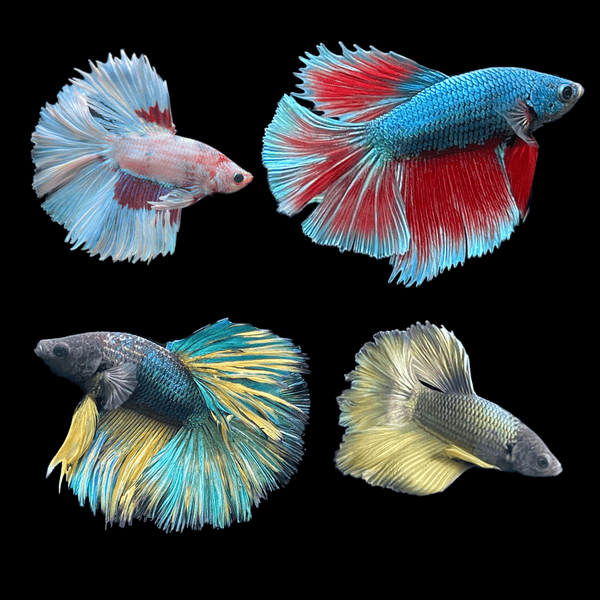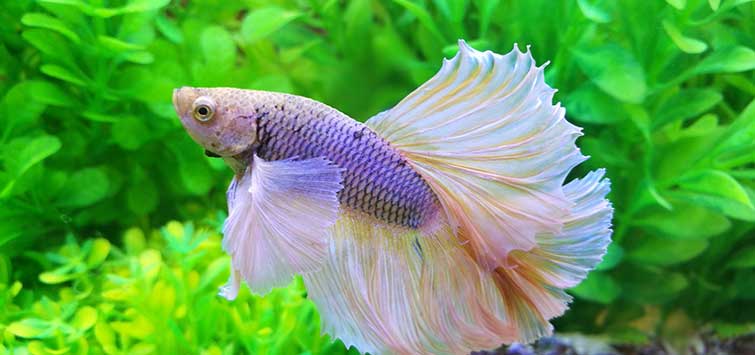Betta Fish Diet: What to Feed Your Betta for Ideal Health And Wellness
Betta Fish Diet: What to Feed Your Betta for Ideal Health And Wellness
Blog Article
All Concerning Betta Fish: Comprehending Their Distinct Demands, Actions, and the Ideal Practices for Ideal Care
Comprehending the unique requirements and actions of Betta fish is necessary for any type of aquarist looking to supply optimal treatment. betta fish. As we check out these elements better, the implications for both newbie and skilled fish caretakers become progressively noticeable, elevating inquiries about just how finest to accommodate these exceptional fish in our homes.
Betta Fish Review
Although usually admired for their dynamic shades and moving fins, Betta fish, medically called Betta splendens, are complex animals that need particular like prosper. Originating from Southeast Asia, these freshwater fish are known for their territorial nature and one-of-a-kind actions. Betta fish display sex-related dimorphism, with males presenting much more dazzling colors and longer fins than females.
Their hostile propensities, particularly among men, demand careful consideration when housing them. Bettas are commonly maintained in single-specimen tanks to avoid territorial disagreements. Nevertheless, they can coexist peacefully with certain suitable types in larger area tanks, supplied the setting fulfills their demands.

To make sure optimal care, aquarists must recognize their one-of-a-kind behavioral qualities, dietary needs, and habitat demands. betta fish. With proper interest, Betta fish can display their vivid individualities and prosper in a properly maintained aquarium setup
Natural Habitat and Atmosphere
Betta fish flourish in a diverse array of all-natural environments, largely located in the superficial waters of Southeast Asia, consisting of rice paddies, swamps, and slow-moving streams. These environments are defined by warm temperature levels, typically in between 75 ° F and 82 ° F(24 ° C and 28 ° C ), and a pH degree varying from 6.5 to 7.5, which is optimal for their health and health.
In their natural environments, Betta fish are accustomed to thick plant life, supplying both shelter and breeding premises. The presence of plants such as floating water lilies and thick turfs not only offers defense from predators yet likewise adds to the oxygenation of the water, which is crucial for their respiratory system needs. In addition, these environments commonly have locations of still water, allowing Betta fish to exhibit their natural habits such as bubble nesting.
Recognizing the all-natural environment of Betta fish is essential for fish tank enthusiasts. Replicating these problems-- via water temperature, pH balance, and the incorporation of live plants-- can dramatically enhance the general health and wellness and longevity of these exciting fish, ensuring they thrive in a home aquarium setup.
Social Habits and Communications
Recognizing the social behavior and interactions of Betta fish is vital for effective aquarium management. Betta fish, or Siamese combating fish, are understood for their special behavior attributes, defined largely by territoriality and aggressiveness. Men, particularly, present extremely aggressive behaviors towards each other, resulting in the infamous track record of Betta fish as boxers. In a restricted room, two men can participate in terrible conflicts, often causing injury or fatality.
On the other hand, female Bettas exhibit less hostile actions and can coexist in teams, called sororities, if introduced properly. It is important to check their communications very closely, as pecking order and prominence can lead to problems. Comprehending the characteristics within a Betta area is essential; establishing concealing spots and making sure sufficient room can mitigate aggression.
Additionally, Betta fish may also show inquisitiveness and social actions in the direction of other varieties. While they can exist together with particular non-aggressive container mates, it is important to select suitable species to avoid stress and aggression. In general, acknowledging these social interactions is essential to fostering a harmonious aquarium environment for Betta fish.
Important Care Guidelines
Providing correct take care of Betta fish is essential to their health and wellness and well-being. To guarantee a thriving atmosphere, it is necessary to keep ideal water conditions. The water temperature level must be maintained in between 76 ° F and 82 ° F(24 ° C to 28 ° C), while pH degrees ought to range from 6.5 to 7.5. Routine water adjustments-- approximately 25% once a week-- assistance keep water quality.
Betta fish require an ideal storage tank dimension; a minimum of 5 gallons is recommended to offer adequate area for swimming and hiding. Consist of decors and plants to develop a stimulating my review here atmosphere, but prevent sharp items that might damage their fragile fins.

Last but not least, make sure the container is equipped with a filter to keep the water tidy, but use a gentle filter to stay clear of solid currents that can stress the fish. By following these essential treatment guidelines, proprietors can advertise a healthy and balanced and lively Betta fish.
Common Health And Wellness Issues and Solutions
In the treatment of Betta fish, recognition of typical wellness problems is essential for preserving their health. One widespread issue is fin rot, commonly created by inadequate water top quality or bacterial infection. Symptoms include torn or blemished fins. To deal with fin rot, improve water conditions and take into consideration making use of a broad-spectrum antibiotic.
An additional common ailment is ich, a parasitical infection characterized by white places on the fish's body (betta fish). Therapy entails raising water temperature and adding fish tank salt to the tank, as this can help get rid of the parasite
Swim bladder disorder is likewise often observed, resulting in buoyancy problems. This problem may occur from overfeeding check out this site or bowel irregularity. A fasting duration of 24-48 hours, complied with by a diet plan of blanched peas, can give alleviation.
Finally, bettas may struggle with velvet condition, shown by a gold dust-like appearance on their skin. Therapy usually requires drug especially developed for outside bloodsuckers, along with boosted tank health.
Regular tracking of water specifications, preserving a tidy atmosphere, and providing a balanced diet regimen are essential precautionary measures. By addressing these health concerns immediately, Betta fish can lead much healthier, more lively lives.
Conclusion
In recap, successful betta fish care calls for an understanding of their special needs and behaviors. Supplying an ideal atmosphere, consisting of appropriate tank dimension and water problems, is important for their health. Additionally, acknowledging their territorial nature and making sure sufficient hiding places can stop aggressiveness. Normal monitoring of health and wellness and water high quality, in my link addition to a balanced diet, adds to the longevity and vibrancy of betta fish. Complying with these standards will promote a growing aquatic community for these exciting animals.
Report this page